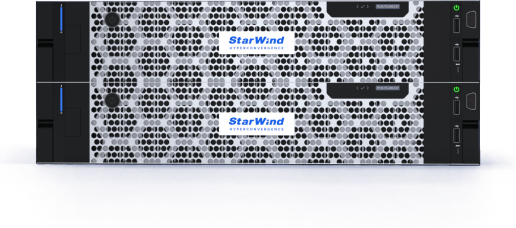Categories: Software
Hyperconvergence remains a practical solution, but there are several things worth checking before choosing a hyperconverged vendor. Support should be at the top of your list. Reliable support keeps production running smoothly and reduces downtime risks. Management should be seamless — ideally, everything is handled from a single interface without extra software. And then, of course, there’s the price. Make sure you’re not just paying for a logo. There are plenty of options out there, but these three points, along with scalability and compatibility, should help you narrow down the right fit.
Introduction
Hyperconvergence isn’t new. Over the last few years, it’s become a go-to option for businesses of all sizes, offering an alternative to traditional converged infrastructure. According to recent market data, the hyperconverged infrastructure (HCI) market is experiencing significant growth, driven by the need for simpler, more scalable IT solutions. The market is packed with hyperconverged solutions, making it harder to pick the one that matches your needs. This article covers three key factors to consider when evaluating a hyperconverged vendor, along with an overview of future trends like AI integration and edge computing support.
Factor 1: Support
Support is arguably the most important factor when choosing any infrastructure component. That’s especially true for hyperconverged appliances, where compute, storage, networking, and management tools are bundled in one box. If something goes wrong, and it might, you need it resolved fast.
Review the support plans carefully. Standard support usually covers business hours with varied response times based on severity. A sub-4-hour response time for Severity 1 issues is considered standard. Premium plans often include 24/7/365 coverage with faster response times — typically under an hour for Severity 1. If you’re paying extra but not getting faster, around-the-clock service, you might want to reconsider.
There’s also the newer trend: proactive support. It’s not always worth the extra cost. Sometimes, it’s just a fancy name for automated monitoring and analytics. If a vendor’s proactive support includes real issue resolution without your constant involvement, that’s valuable. Otherwise, it’s just standard support in new packaging.
Factor 2: Management
Hyperconvergence is supposed to simplify management. Once you have your nodes set up, usually at least two for redundancy, you shouldn’t need to mess with additional tools or complex setups.
Ask about installation and migration help. Check how user-friendly the interface is. Is it a single console for everything? Or are you juggling multiple tools? You want one management layer that handles everything from VMs to storage and networking.
Factor 3: Price
Unless you’ve got an unlimited budget, price matters. Hyperconverged solutions vary widely in cost. Focus on what you’re actually getting — hardware specs, CPU, networking, storage. Compare those to market prices to understand the markup.
Sometimes you’ll pay more for the software layer that ties everything together. That’s fine — features like storage optimization, high availability, backup tools, and centralized management can justify the price. But don’t pay extra just for branding.
Additional Factors to Consider
Scalability: Ensure the HCI solution can scale to meet your future needs. Consider both scaling up (adding more resources to existing nodes) and scaling out (adding more nodes to the cluster).
Compatibility: Verify that the HCI solution is compatible with your existing hardware and software infrastructure. Check for compatibility with your hypervisor, operating systems, and applications.
Future Trends in HCI
AI Integration: HCI solutions are increasingly incorporating AI and machine learning to automate tasks, optimize performance, and improve resource utilization.
Edge Computing Support: HCI is expanding to edge computing environments, enabling organizations to process data closer to the source and reduce latency.
Conclusion
Support, management simplicity, price, scalability, and compatibility — those are the key basics you should check when choosing a hyperconverged vendor. Good support keeps things running, clean management saves time, smart pricing helps avoid overspending, and scalability and compatibility ensure long-term viability. With so many vendors available, having a clear checklist can make your decision easier.


